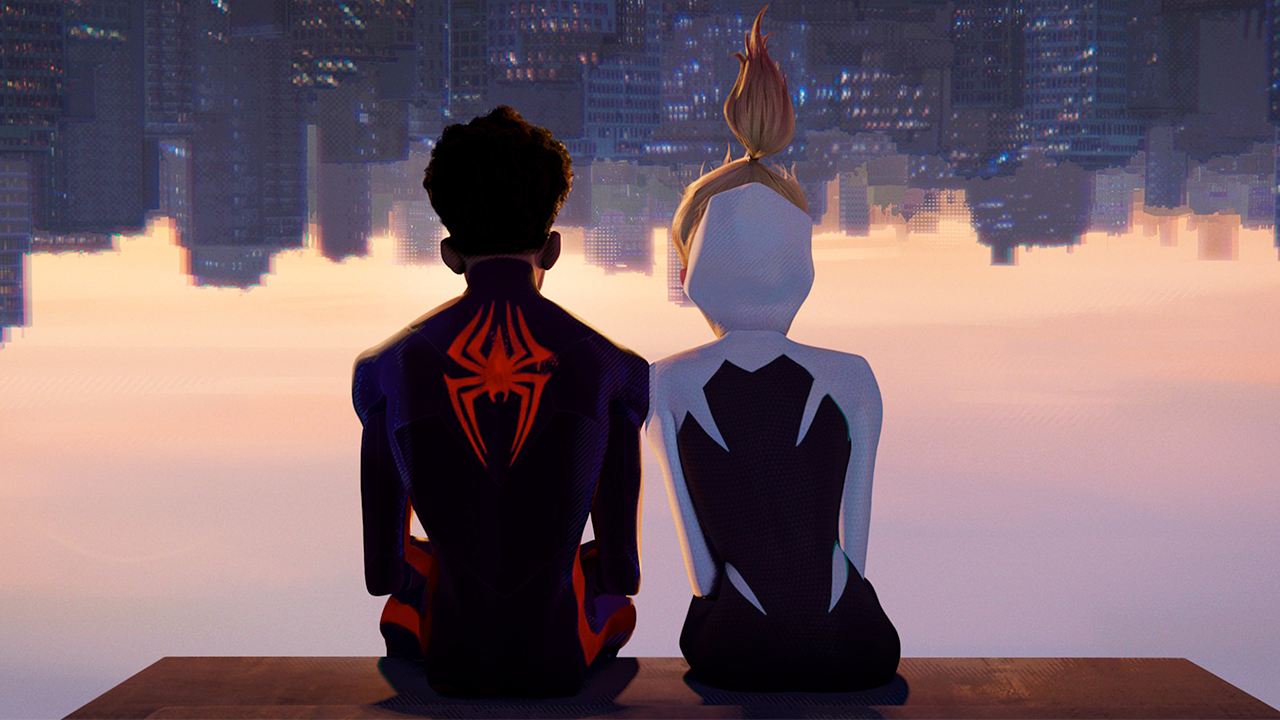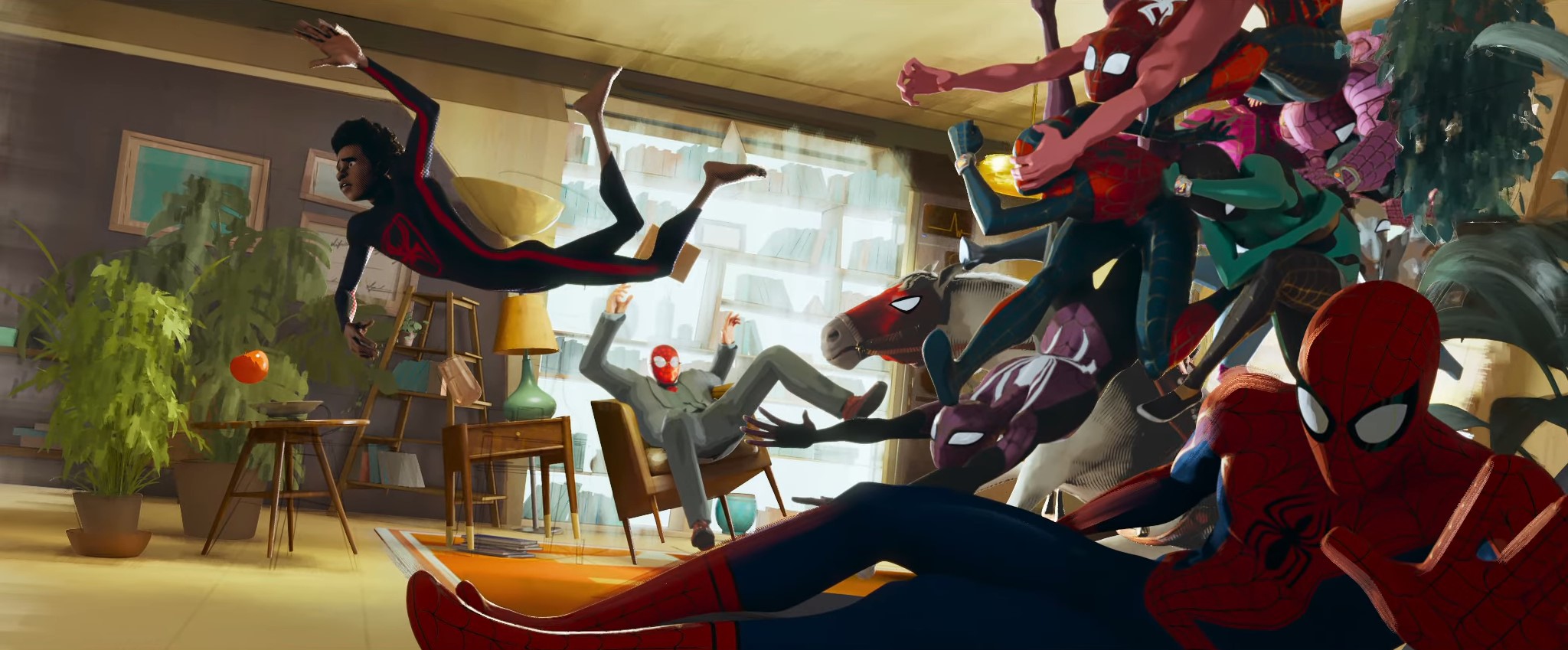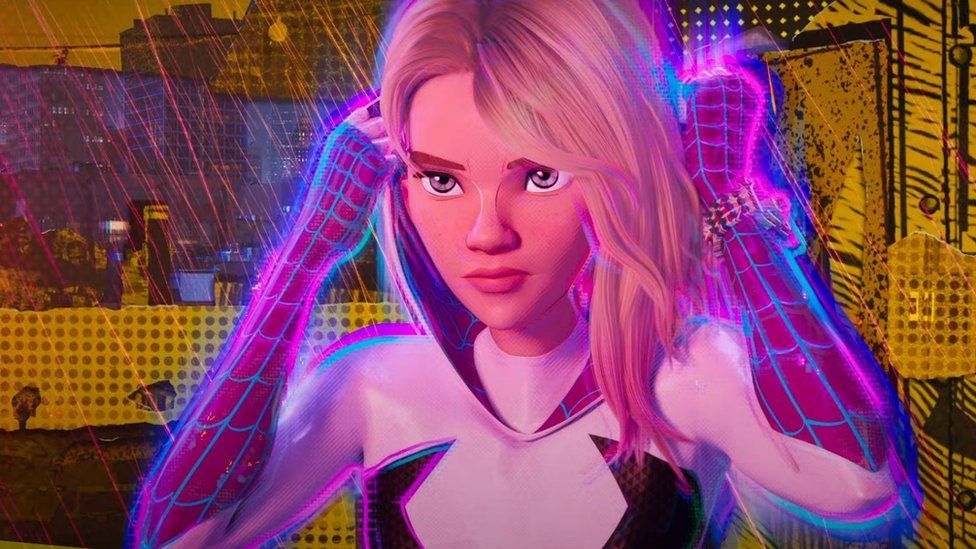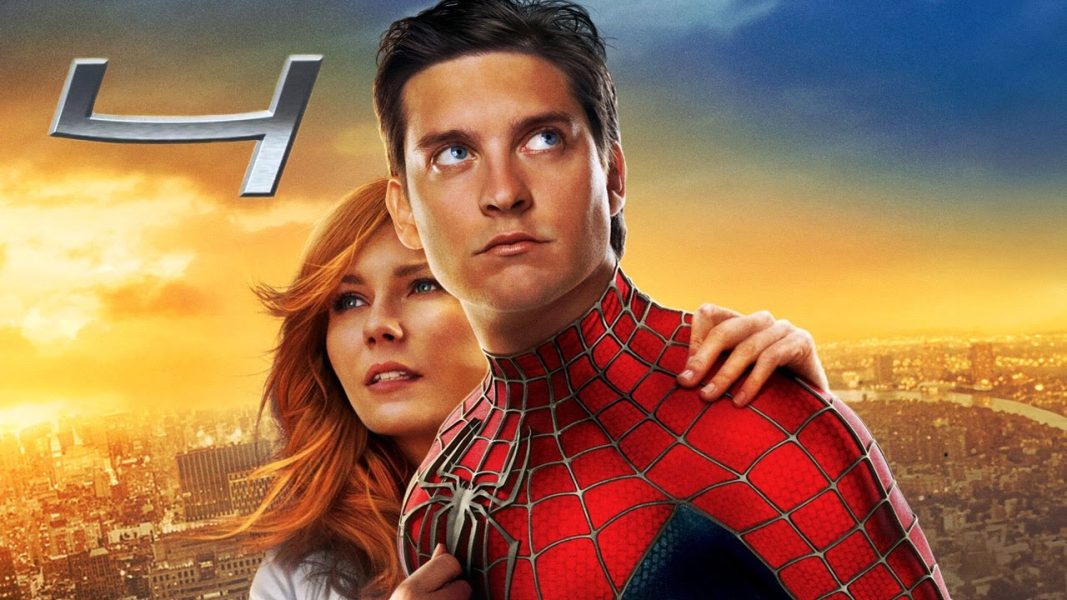Spider-Man: Across the Spider-Verse (2023): One Spider-Man vs. The Entire Multiverse

When we think of our favorite Spider-Man films, most people usually look back at Sam Raimi’s trilogy with its nostalgia and massive heart. Even with Spider-Man joining the MCU, Sony took another crack at a Webhead movie on the animated front with Miles Morales. It came in the form of Spider-Man: Into The Spider-Verse, which practically came out of nowhere and entered everyone’s hearts as one of the best superhero films ever created, as well as one of the best animated films of the 2010s. A sequel was inevitable, and it would come with high expectations as well. When it was announced that Spider-Man: Across the Spider-Verse would be the first half of a two-part story, it got everyone wondering what type of direction it would take. And it was glorious!
Miles Morales (voiced by Shameik Moore) has been Brooklyn’s friendly neighborhood Spider-Man for over a year as he juggles school, family, and crime fighting. One day Gwen Stacey (voiced by Hailee Steinfeld) makes a surprise visit to his city, searching for the multiverse hopping villain known as The Spot (voiced by Jason Schwartzman). With The Spot’s powers growing along with a vendetta against Spider-Man, Miles and Gwen seek help from Miguel O’Hara (voiced by Oscar Isaac), Jessica Drew (voiced by Issa Rae), Peter B. Parker (voiced by Jake Johnson), and other Spider-People to vanquish the villain before he can destroy the multiverse.

Just when I think I’ve seen some of the best superhero projects with the likes of Guardians of the Galaxy Vol. 3 or The Suicide Squad, Spider-Man: Across the Spider-Verse comes crashing in and stealing the spotlight from everyone. The storytelling is mature and magnificent. The writers were hellbent on subverting every expectation and trope that has become synonymous with Spider-Man, which also works to the advantage of the story’s core themes revolving around how anyone can be Spider-Man as well as the manner of creating your own story. It becomes refreshing in the superhero medium when this happens as it leads to many memorable character interactions, depth, and complex relationships.
Speaking of said character relationships, the writers went the extra mile in creating a divide between Miles Morales and Miguel O’Hara as their viewpoints on the world put them at odds. It also becomes heartbreaking when O’Hara uses Gwen and Peter B. Parker to dissuade Miles from doing what Spider-Man is supposed to do; making for far more intricate relationships and struggles between friends as lines are drawn and decisions are made. It also shows the true core of Miles’s resolve as he fends off an entire army of Spider-People in a visually lush and mind-bending fight scene.

Miguel O’Hara’s perspective on Miles being Spider-Man (Miles getting bitten by the spider was a mistake that threw his universe and the greater multiverse out of balance) is in direct conflict with one of the biggest themes of the first movie— anyone can wear the mask. This reflects the greater theme of fate and determinism present within Across the Spider-Verse. The movie tackles what is probably the core theme at the heart of Spider-Man as a character: what do you do when you have to choose between saving someone you love and saving the whole world? They set up quite a lot for Beyond the Spider-Verse, but given how well crafted the first two are, I have faith they will wrap things up beautifully.
Like the first movie, Across the Spider-Verse avoids the traditional pseudo-classical score of most Hollywood movies today, opting for a score that is heavy on hip-hop and electronic music. A notable musical moment would be at the very start of the movie where Gwen talks about her feelings on being Spider-Woman and the events of the previous movie, while a flashy and dynamic drum solo performed by the character plays in the background.
The voice performances are somehow better than the first as well, along with adding tons of new characters without overstuffing itself. Shameik Moore and Hailee Steinfeld bring more depth to Gwen and Miles’ characters as well as their relationship as they wade through the rocky waters of the multiverse which makes them feel more human than super-beings. Luna Lauren Velez’s performance as Rio Morales is a real stand-out in terms of recurring characters from the first movie. She delivers a fantastic performance as the mother of a teenage boy becoming a man, and her desire to enable Miles’s independence as he grows up as well as wanting to see him remain safe and happy is clearly apparent, especially in her monologue which culminates in the tear-jerking line, “Wherever you go from here, you have to promise to take care of that little boy for me. Make sure he never forgets where he came from. And he never doubts that he’s loved. And he always helps everyone. And that he belongs there,” I teared up again writing about it, I won’t lie.
Along with new additions such as Daniel Kaluuya as Spider-Punk becoming an unexpected fan favorite for his candor, humor, and just overall rebellious nature. Oscar Isaac as Miguel O’Hara was something else, as he is one of the more intimidating iterations of Spider-Man that has been seen on the big screen; and yet he remains sympathetic and understandable as a hero who sees the big picture when his philosophy clashes with Miles’s. But the biggest surprise probably was Jason Schwartzman as The Spot, The Spot started out as a really goofy, laughable villain at the beginning but then we get his backstory and relation to Miles and Spot slowly becomes quite honestly one of the scariest villains of any superhero film with his ability to destroy the multiverse as we know it.

In the first film, the animation style was unlike anything seen before in a film; making it feel as if a comic strip truly came to life. Across the Spider-Verse doubles down on that and pretty much creates a living comic book. Not to mention the different styles of comics there are in the world along with different types of animation. A stand out on this front is Spider-Punk, who is animated in a collage style reminiscent of zines (a kind of independently published magazine which is associated with many countercultures, including punk). This zine style is also shared by Hobie’s dimensional devices and portals, which stand in stark contrast to the sleek neon futurism of Spider-Man 2099’s tech. Such as the case when the filmmakers made a little easter egg detour to a lego Spider-Man universe as a nice callback to The Lego Movie, which was created by producers Phil Lord and Christopher Miller. Spider-Man India’s Mumbhattan is full of towering skyscrapers in lush shades of green. A key example of the filmmakers using the animation style to the story’s thematic advantage was whenever Gwen was in her universe as the colors constantly changed from pink and teal to white as her emotions changed, along with her thoughts on Miles and his place in her story.

Spider-Gwen is a tragic character both in her universe and outside of it; every other version of Gwen Stacy falls in love with Spider-Man, and it always ends in tragedy. Gwen is aware of this, and confides that anxiety in Miles, which results in a beautifully subtle moment where Miles slides his hand toward Gwen before pulling it away. The hints of romance between Miles and Gwen continue in this movie, and the writers have managed to produce a will-they won’t-they sort of romance that feels genuinely fresh and compelling. Across the Spider-Verse fleshes Gwen out, and transforms her from an important side character into a full-blown deuteragonist. It’s clear that she will have a significant role to play in Beyond the Spider-Verse, and her fraught yet heart-warming relationship with Miles will clearly be at the center of it.
Then there’s the Easter eggs, there are so many that I am gonna have to revisit this film multiple times to catch them all, along with the cameos. Some of these Easter eggs are funny as one offs, such as the Spider-Man pointing meme. Others are caption boxes in the style of comic book editorial notes for the various Spider-People which will probably require the luxury of frame-by-frame pausing in order to read fully. The cameos are nothing short of great as they manage to bring in some MCU lore, Andrew Garfield’s and Tobey Maguire’s Spider-Man stories respectively, even Insomniac’s video game version of the character, but the biggest one has to do with a certain live action character that was seen in Spider-Man: Homecoming, one which fans have been anticipating the return of for years.
Spider-Man: Across the Spider-Verse will leave everyone wanting more and then some with its cliffhanger ending, while satisfying plenty with a strong story in its own right. Every character gets a moment to shine, heroic or antagonist. The entire voice cast left it all on the floor as they committed to their characters completely, with Jason Schwartman’s excellent performance as The Spot being a welcome surprise. Shameik Moore and Hailee Steinfeld both give their characters as much charisma and humanity as possible, along with Oscar Isaac just killing it as usual. Across the Spider-Verse also doubles down on the first film’s theme that anyone can be Spider-Man, along with complicating it, by introducing the idea of canon and what it means to create one’s own story. The visuals are flawless, creating an absolute treat for the senses that truly feels like an animated comic book, along with Easter eggs and cameos that compliment the story and never overstay their welcome. I myself cannot wait the agonizing nine months before we are graced with Beyond the Spider-Verse coming out in March of 2024.
Co-Written By: Gray Kruse








Great review! I teared up myself when I read it!